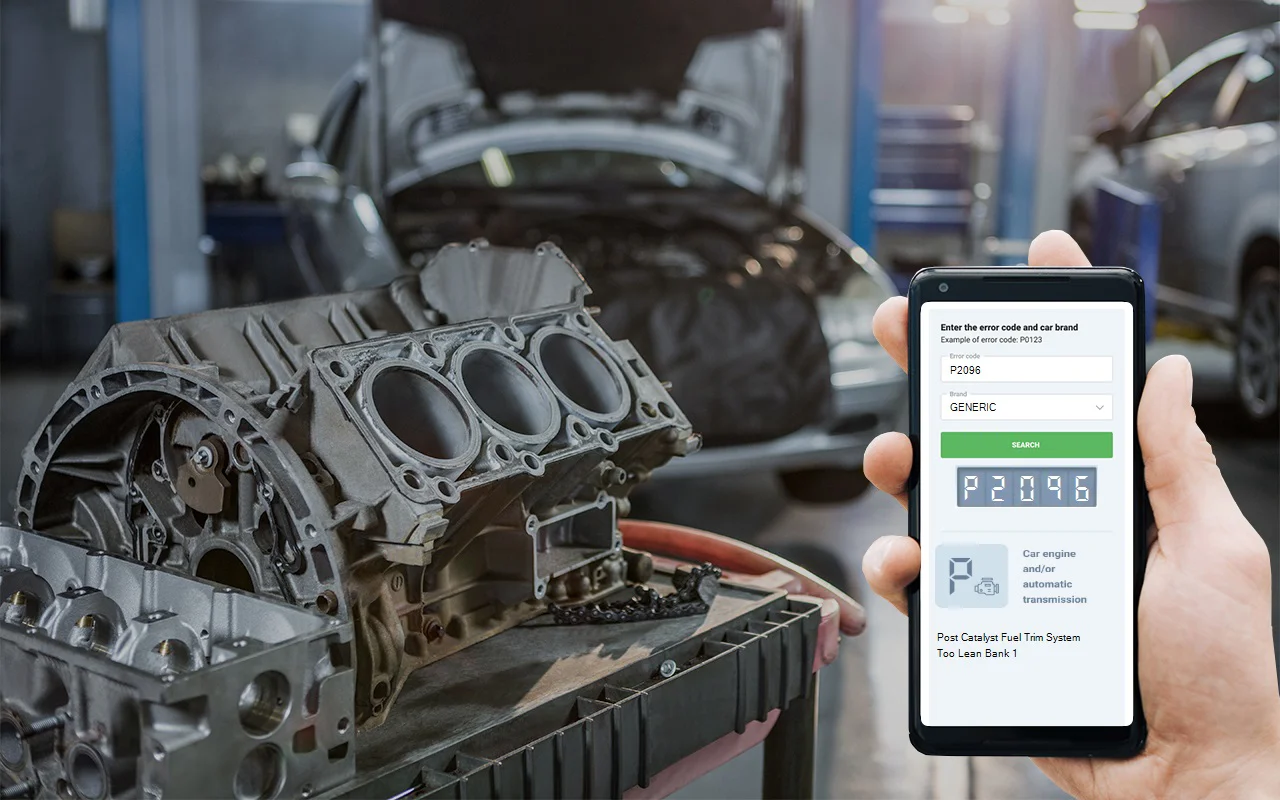Causes of OBD P2096
In your fuel mixture of air and gasoline, "lean" means either excess air is entering the engine, or fuel is not being delivered efficiently. The first issue is more common and could be caused by a crack in one of the hoses.
If the problem is due to insufficient fuel, potential causes may include clogged filters, compressed fuel lines, or faulty fuel pumps.
In some cases, the cause of the problem may be your vehicle's catalytic converter. If so, you may also see code P0420 along with P2096. Additionally, if code P0100 is present, the culprit is likely the mass airflow (MAF) sensor.
Symptoms of P2096 Error
Since your vehicle is burning fuel less efficiently than required, you may notice several signs of this issue while driving. Here are some of the most common symptoms associated with code P2096:
- Rough idle: Your vehicle may shake more than usual and produce harsh sounds while idling.
- Knocking or misfiring: Excessive air in the fuel mixture may cause improper combustion, leading to loud knocking or minor misfires in the engine.
- Sluggish acceleration: If your vehicle takes longer to gain speed, this may indicate poor fuel flow through the engine.
- Decreased fuel economy: You may notice that your vehicle consumes fuel more quickly than usual due to inefficient performance.


Common Mistakes When Dealing with OBD Code P2096
Before starting diagnostics, it is crucial to understand all present codes. For example, code P0100 may indicate an issue with the mass airflow (MAF) sensor. Carefully analyzing all codes can help pinpoint the root cause of the problem.
Additionally, caution should be taken during any repair work. After replacing or repairing a component, reset the codes using an OBD2 scanner and perform a test drive. If the check engine light does not reappear, the problem is likely resolved. However, if the issue returns, multiple underlying problems may need to be addressed simultaneously.
For Jeep or Chrysler vehicle owners, it is important to check electrical connectors under the hood, as they tend to wear out quickly. Failing to replace these components may lead to additional fault codes.

What Repairs Can Fix the P2096 Fault Code?
Once the specific faulty component has been identified, the best solution is to replace it. This may require replacing one of the following components:
- Vacuum hose
- Catalytic converter
- Fuel filter
- Fuel pump
- Fuel pressure regulator
- Oxygen sensor(s) or mass airflow (MAF) sensor
- Spark plugs
Conclusion
Your vehicle's fuel system is highly sensitive, and it directly impacts optimal engine performance. When encountering code P2096, it is essential to address the issue immediately. Not only can this prevent long-term engine damage, but it can also help save fuel costs. Additionally, careful attention should be paid during diagnostics and repairs to ensure no details are overlooked.
Video for "Error p2096" on YouTube
The following error codes are often searched for
OBD P2096 code analysis and solutions
The page presents a detailed analysis of code P2096 for Opel, Renault, VW (Volkswagen), Ford, Peugeot, Mitsubishi, Skoda, BMW, Citroën, Toyota, Lada, Honda, Kia, and other models to investigate probable causes and solutions related to obd-ii errors, with main attention on the issue. We provide technical descriptions and methods for diagnostics to identify and overcome the difficulty effectively. Our objective is to become a complete resource offering information on issues related to obd 2 errors and to provide you with the tools needed for successful repair and maintenance of your auto. If during the repair of OBD-2 codes you need to purchase parts, don’t forget to visit Avtopro!







